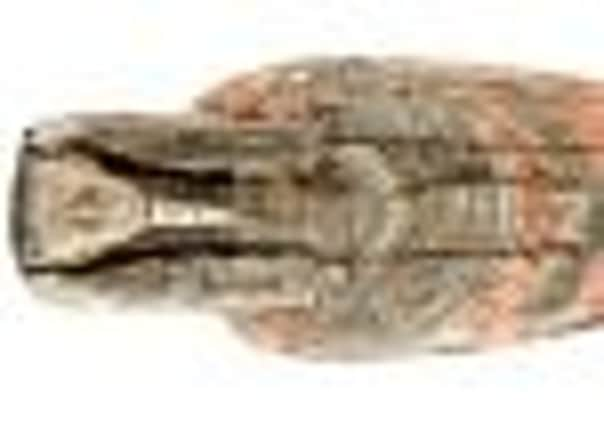Not the sands of Egypt but Birmingham University: Ahmose’s coffin is returned to its rightful home


Now the lid, excavated at Beni Hasan in Egypt in 1904 and said to date to around 550BC, will be officially returned to its rightful owners, more than 50 years after it was donated to Leamington Art Gallery and Museum.
Already displayed at Birmingham Universty’s Institute of Archaeology and Antiquity Museum, Warwick District Council’s executive committee is due to approve the return of the artefact as a gift on Wednesday.
Advertisement
Hide AdAdvertisement
Hide AdThe lid was donated to Leamington Art Gallery and Museum in 1960 by Cllr T A Dorey, a Birmingham University classics lecturer and member of Leamington Borough Council’s library, art gallery and museum committee.
According to the Leamington Morning News, Cllr Dorey told the committee it had been found abandoned at Tamworth station. He said: “The stationmaster took charge of it for a while before passing it on to Prof Thompson who, upon his retirement, gave it to Prof Dudley. Dr Dorey ‘begged’ the lid from Prof Dudley when it needed a ‘good home’ after the classics department moved to new offices.”
Nicknamed George, the lid stayed for years at Leamington Art Gallery in Avenue Road but in 1991, with nowhere to store it and no way of looking after it, it was loaned to Birmingham City Museum and Art Gallery, where Birmingham University’s curator of collections Dr James Hamilton recognised it as a lid presented to Birmingham in 1904.
Dr Hamilton provided copies of a letter from Mr J H Hopkinson of Birmingham University requesting items from the director of excavations at Beni Hasan, and a reply agreeing to meet the cost of packing and carriage of a ‘wooden sarcophagus (or part thereof)’.
Advertisement
Hide AdAdvertisement
Hide AdThe trail goes cold until a memo dated from January 1990 from Prof R A Tomlinson, questioning whether Prof Dudley was authorised to give away university property. It continues: “At that time the relationship between Dudley and my predecessor, Tritsch, was extremely bad. I imagine it was sent to Leamington because Dr Dorey, of the Latin department, was mayor of Leamington, and to spite Tritsch.’
Mr Watkin says the fact that the vice-chancellor of Birmingham University confirmed the gift indicates that council now has legal title to the lid, but says that it would not be accepted today, as the museum will only accept items to which the donor has indisputable legal title.
In 2000 it was agreed that the lid should be loaned to the university, which conserved it at a cost of £1,300 and had a bespoke display case made. It is now exhibited in the Institute of Archaeology and Antiquity Museum and regularly used as a teaching aid for students and schools.
Who did it really belong to?
The coffin lid originated in the Beni Hasan area of Middle Egypt and belonged to a man named Ahmose, whose name is visible in the hieroglyphics that make up much of its decoration, along with that of his mother Payesherynetjer.
Advertisement
Hide AdAdvertisement
Hide AdIt is made up of around 15 pieces of sycamore, grown in the area around Beni Hasan, and the face shows very faint traces of gold leaf, particularly around the nose, much of which is likely to have been removed during excavation.
Unusually, only the outer surface is decorated. The main part of the decoration consists of an image of the goddess Nut, ‘Great Mother of the Gods’, with her wings outstretched, with eight different gods pictured on the left and right sides.